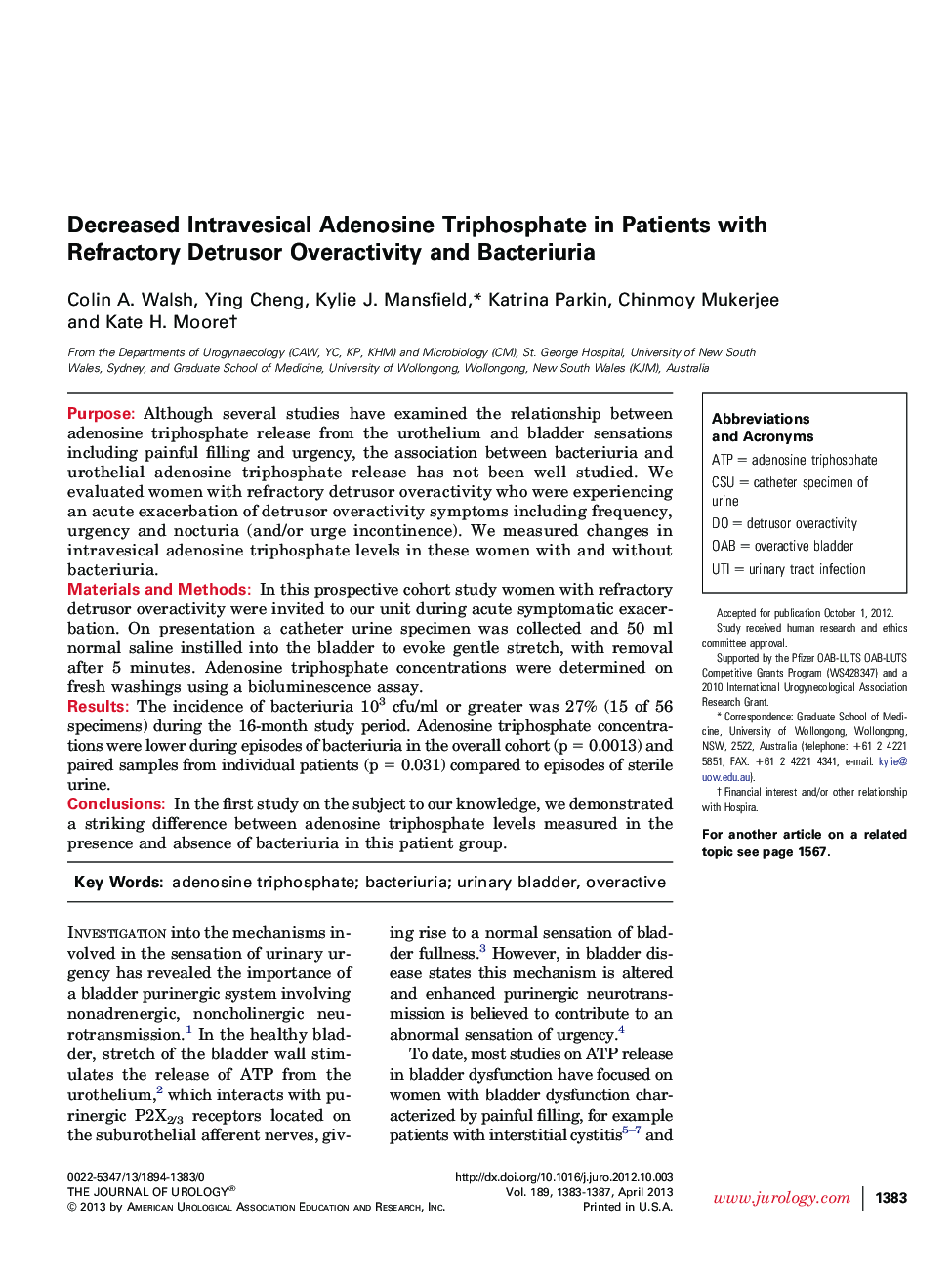| Article ID | Journal | Published Year | Pages | File Type |
|---|---|---|---|---|
| 3866870 | The Journal of Urology | 2013 | 5 Pages |
PurposeAlthough several studies have examined the relationship between adenosine triphosphate release from the urothelium and bladder sensations including painful filling and urgency, the association between bacteriuria and urothelial adenosine triphosphate release has not been well studied. We evaluated women with refractory detrusor overactivity who were experiencing an acute exacerbation of detrusor overactivity symptoms including frequency, urgency and nocturia (and/or urge incontinence). We measured changes in intravesical adenosine triphosphate levels in these women with and without bacteriuria.Materials and MethodsIn this prospective cohort study women with refractory detrusor overactivity were invited to our unit during acute symptomatic exacerbation. On presentation a catheter urine specimen was collected and 50 ml normal saline instilled into the bladder to evoke gentle stretch, with removal after 5 minutes. Adenosine triphosphate concentrations were determined on fresh washings using a bioluminescence assay.ResultsThe incidence of bacteriuria 103 cfu/ml or greater was 27% (15 of 56 specimens) during the 16-month study period. Adenosine triphosphate concentrations were lower during episodes of bacteriuria in the overall cohort (p = 0.0013) and paired samples from individual patients (p = 0.031) compared to episodes of sterile urine.ConclusionsIn the first study on the subject to our knowledge, we demonstrated a striking difference between adenosine triphosphate levels measured in the presence and absence of bacteriuria in this patient group.
